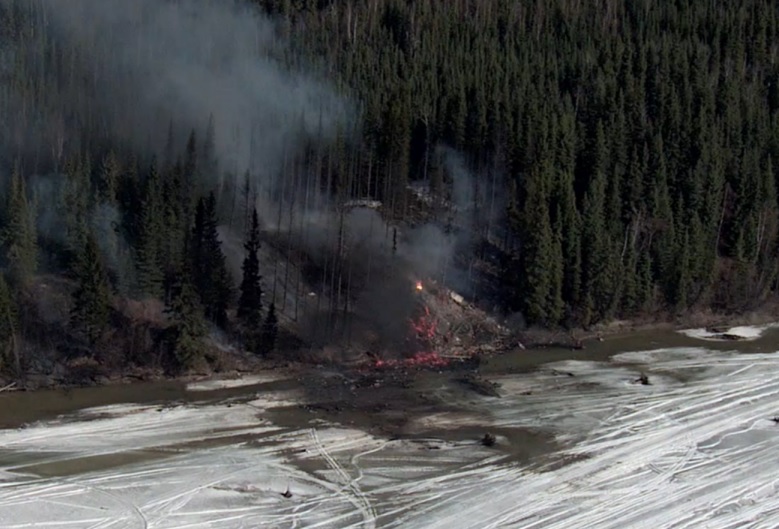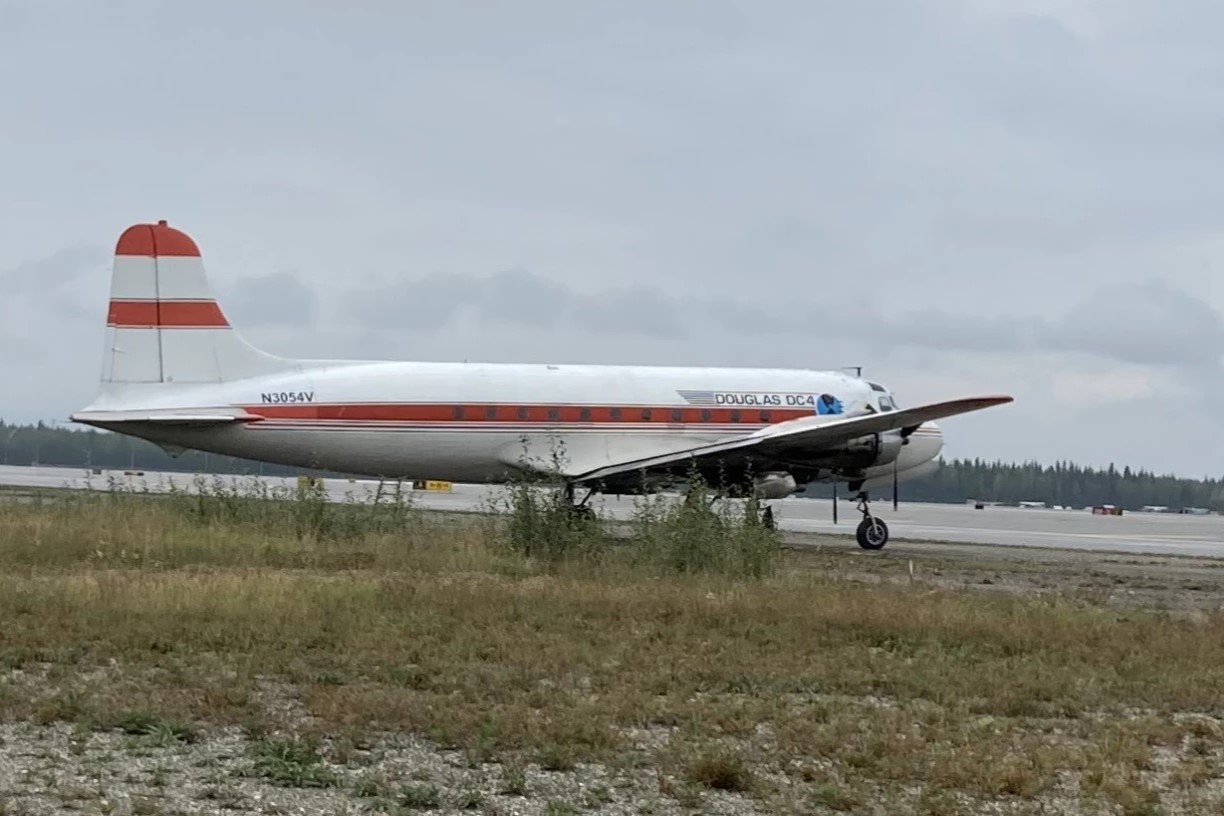
The state Department of Environmental Conservation has no plans to clean up the site where a cargo plane crashed and burned near Fairbanks last month, killing both crew members. The agency says tests show the fire consumed nearly all of the 4,700 gallons of liquid fuel on board.
The Douglas C-54 crashed on April 23 a few minutes after takeoff from Fairbanks International on a flight to Kobuk with 3,400 gallons of unleaded fuel, two 100-gallon propane tanks, plus 1,300 gallons of aviation fuel, or av-gas, for the plane’s four engines. But tests conducted the day after the crash detected hardly any fuel in samples of vegetation and soils at the site.
“What we found was very little fuel left onsite,” says Kimberley Maher, DEC’s on-site coordinator of the crash response. “Most of the av-gas and fuel that was being transported as cargo seemed to have been consumed by the fire.”

Maher she says the National Transportation Safety Board came to the same conclusion. NTSB Alaska office chief Clint Johnson says the agency also revised its first report on the fuel the plane was hauling in a preliminary report.
“The initial reports from the operator the day of the accident were that it was fuel oil,” Johnson said. “That has since been changed, since the investigation has continued, and now they are reporting that it was in fact unleaded fuel that was headed to Kobuk.”
Wasilla based Alaska Air Fuel owned and operated the C-54. That’s the military version of the DC-4, which is how initial reports identified the plane. The fiery crash occurred on a steep bank of the Tanana River near Cripple Creek.
Maher says the DEC team that checked the site found evidence of fuel in only one area.
“We did find one little spot where there seemed to be some fuel that did get soaked up by the vegetative mat that had elevated fuel levels,” she said in an interview Tuesday.
But she said that’ll likely be broken down by microbes that feed on carbon, one of the elements that make up gasoline. Maher says that “natural attenuation” process would likely take care of the small amounts of fuel that didn’t get burned. She says DEC’s decision not to attempt any cleanup also reflects the difficulty of accessing the area.
“The site is a very steep bluff, and it would be hard to maneuver any heavy equipment around it,” she said. “And with the small amount of fuel left, we just expect that to naturally attenuate.”

Maher said members of the team spotted a small sheen on the surface of the Tanana River after the crash, but were unable to get close enough to take liquid or frozen samples due to rotten, unsafe ice. She says DEC likely will check the site once more later.
Johnson, the NTSB chief, says the conditions also complicated recovery of one of the plane’s engines that fell onto the ice just before the crash.
“That engine was thrown out onto the ice, clear of the accident site,” he said Tuesday.
Johnson said NTSB will closely examine the engine, which reportedly was on fire just as the plane began a steep descent that ended in the crash.
He anticipates that a final crash investigation report will be completed by this time next year.
DEC’s Spill Prevention and Response data on the plane crash has been posted on its website.
Tim Ellis is a reporter at KUAC in Fairbanks.




